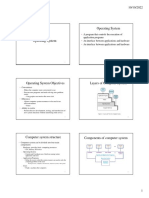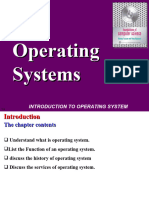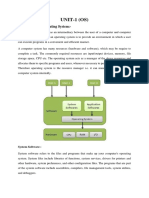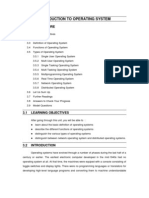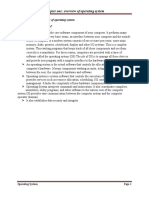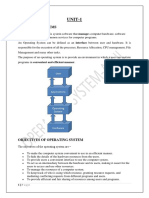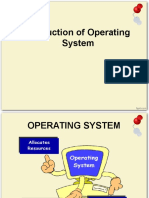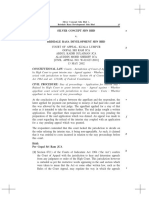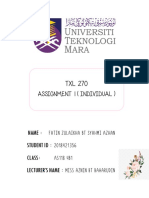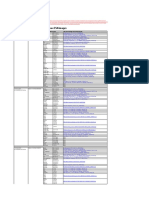0% found this document useful (0 votes)
23 views19 pagesUnit 1 - Operating System An Introduction
The document provides an introduction to Operating Systems, detailing their definition, functions, and evolution. It covers various types of operating systems, including batch, multi-programmed, time-sharing, personal computer, multi-processor, distributed, and real-time systems. The document emphasizes the importance of operating systems as resource managers and their role in facilitating user interaction with computer hardware and application software.
Uploaded by
Jayanth BalakuntlaCopyright
© © All Rights Reserved
We take content rights seriously. If you suspect this is your content, claim it here.
Available Formats
Download as PDF, TXT or read online on Scribd
0% found this document useful (0 votes)
23 views19 pagesUnit 1 - Operating System An Introduction
The document provides an introduction to Operating Systems, detailing their definition, functions, and evolution. It covers various types of operating systems, including batch, multi-programmed, time-sharing, personal computer, multi-processor, distributed, and real-time systems. The document emphasizes the importance of operating systems as resource managers and their role in facilitating user interaction with computer hardware and application software.
Uploaded by
Jayanth BalakuntlaCopyright
© © All Rights Reserved
We take content rights seriously. If you suspect this is your content, claim it here.
Available Formats
Download as PDF, TXT or read online on Scribd
/ 19









